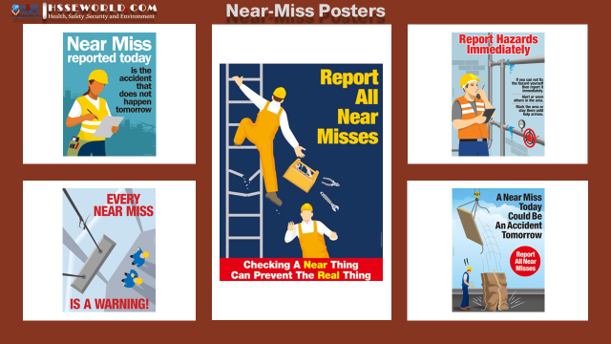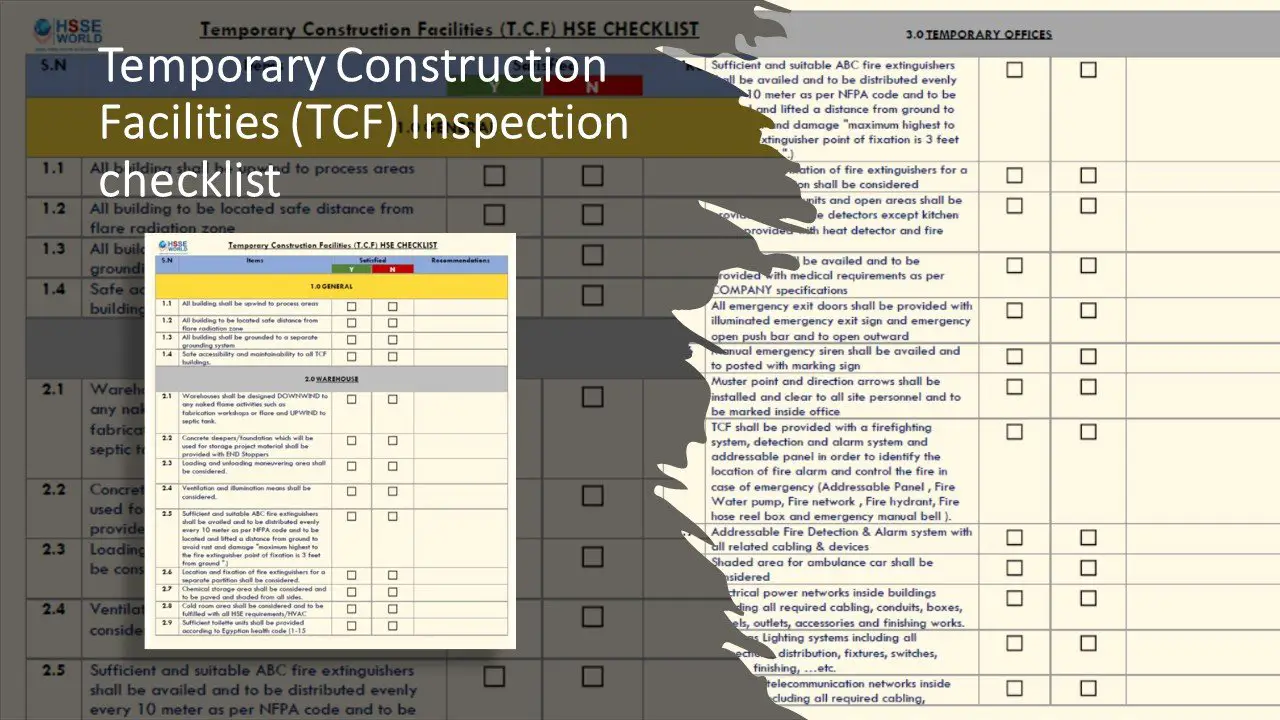Rig Check was developed by the National Institute for Occupational Safety and Health (NIOSH) in partnership with safety experts from the oil and gas extraction industry. It is made up of 35 inspection forms. The forms are designed to be used by rig workers to document the inspection of tools and equipment commonly found on rotary and workover rigs. Each inspection form includes instructions for assessing and recording the condition of the equipment. When applicable, relevant federal regulations and industry recommended practices are included.

The Rig Check inspection forms are an excellent training tool for short service employees, who may not be familiar with the tools and equipment found on oil and gas rigs. Small companies whose safety and health resources are limited may find Rig Check useful for enhancing their HSE programs.
Rig Check Monthly Inspection Forms:
Emergency Response:
- Emergency Response Plan
- Emergency Equipment
- Alarms & Shutdown
- Fire Extinguishers
- Eye Wash Stations
- First Aid Kits
Electrical Safety:
- Energy Isolation
- Electrical Systems
Fall Protection:
- Harness & Lanyard
- Retractable Lifelines
Stairways & Walkways:
- Stairways & Landings
- Handrails & Guardrails
- Gratings & Walkways
Lines & Slings:
- Auxiliary Hoisting Lines
- Static Hanging Lines
- Synthetic Web Slings
- Wire Rope or Cable Slings
- Chain Slings
- Shackles
Tools:
- Hand Tools
- Power Tools
Hoses:
- Hose & Fittings
- Safety Chain & Whip Check
Chemical Hazards:
- Material Safety Data Sheets (MSDS)
- Chemical Storage
- Compressed Gas
Ladders & Platforms:
- Fixed Ladders
- Portable Ladders
- Fixed Platforms
Other:
- Dropped Objects
- Housekeeping
- Tubular Storage
- Pins and Keepers
- Machine Guarding
- Load Path Welds
Snapshot of Form

Instructions
Ensure that each well has an emergency response plan, which includes simple instructions for notifications in the event of a rig-based emergency. Notification protocols for medical emergencies, fire on the rig or location, gas release or loss of well control, or a security breach should all be included. In most cases, there will be contingency plans in place for the well that address notifications for long-term events that include notification of government agencies and outside well control expertise. These contingencies can be noted in the working plan but should not complicate the posted action plan.
LOCATIONS: Write locations of posted, current emergency response plans. These should be in central locations such as the rig doghouse, change house, Rig Supervisor’s office, Company Man’s office, and rig camp.
In addition, check that the response plan is posted anywhere emergency communications may be made, including the Rig Supervisor’s truck, and the guard shack.
CURRENT NUMBERS: Check that numbers for the local EMS (Emergency Management System) are shown in large bold letters and numbers. Note that some cell phone systems will route 911 calls to the emergency system where the carrier is based (possibly a different state).

MANUFACTURERS INSTRUCTIONS:
Every effort should be made to inspect and maintain these systems as instructed by the manufacturer. Installation, care, and maintenance should all be available in the equipment information package. Beyond function and readiness checks, testing protocols and adjustments should be carried out by competent, trained personnel.
ALARMS: Rig emergency alarms may be automatic or operated by personnel from various locations manually. Whichever the case, the alarms should be heard throughout the rig and on the location. The alarms should be distinctive and easy to identify as to their purpose. Alarms that work in conjunction with lights should be visible from the entrance of the location. It is a good practice to include a wind direction indicator in close proximity to the lights. All employees should be trained to activate manual alarms and understand what triggers automatic alarms.
TESTING ALARMS: Manual alarms can be tested during drills and during crew training sessions. Position crew members around the rig to provide feedback as to coverage and volume of the alarms. Whenever possible, test alarms with test gas to ensure proper calibration and sensitivity. You should never claim a false alarm as a function test.
TESTING EMERGENCY SHUTDOWN
DEVICES: Emergency shut-down devices (ESD) that will close off the combustion air should be installed on all of the rig’s diesel engines. It is important to understand just how particular ESD functions BEFORE you attempt to test it. Engine shutdowns or rig savers may damage engine components if they are engaged when the engine is running at speed. Careful plans should be made with the mechanics to develop a test protocol that will ensure the functionality of the devices without damaging the engine. In most cases, these devices can be checked with the engine shut down. Manual engine shutdown devices that shut off the fuel to the engines can also be tested while the engine is shut down.
CROWN SAVERS AND FLOOR SAVERS: These
devices can be tested by slowly pulling into the actuator. Here again, accidentally tripping the device should not be recorded as a test. The system must function so that the proper adjustment can be verified. Crown and floor savers should be function tested at the start of each tour and after line slip or cut.
SMOKE ALARMS: Smoke alarms in trailers and outbuildings should be function tested monthly or following a rig move. Note on the inspection form when batteries are changed each year.
TESTING PLANS AND PROTOCOLS: Each
the rig should have a written plan for calibrating and testing alarms and shutdown devices. The inspection should include a review of these documents to ensure new equipment and or rig modifications have not altered the function of the devices.
These checklists are not all inclusive. You may wish to add to them or delete portions that do not apply to your workplace. Carefully consider each item as you come to it and then make your decision. Do not spend time with items that have no application to your workplace.
Download the Checklists
35 Inspection forms for Rig Check.PDF
35 Inspection forms for Rig Check.Doc
More Forms
- Navigating the Risks: The Ultimate Guide to Safety When Working Near Water
- Downloadable Kitchen Safety Inspection Checklist for Restaurants
- Mastering LOTO: Protecting Workers with Energy Isolation and Isolation Confirmation Certificates
- Flammable and Combustible Storage Checklist Free Download
- Secure Your Lifts:Guidelines for Safe Lifting Operations Free Planning Tool
- Sample of Accident Prevention Program ( APP) Template for General Industry Free Download
- Free ISO 14001:2015 Environmental Management System Audit Checklist Download
- Guides for Walking and Working Surfaces Safety Program
- Workshop Safety Guideline and free Posters
- Free Ergonomics Checklist for General Industry
- Work Area Safety Checklist
- Machine Safety and 43-Equipment Inspection Checklists
- Scaffold Safety self Audit and checklist
- Hot Work Controls and its Permit to work Form
- Safety Observation Report Template
- Forklift Operator’s Daily Checklist and safety Tips
- Inspecting Fall Protection Equipment Forms
- Templates: HSE Incentives and rewards
- 35 Inspection forms for Rig Check
- Chemical Risk Assessment form
- 22-Safety Inspection Checklists
- Safety Task Assessment Form
- Suspended Scaffold Pre-Operation Inspection Checklist
- Photo of the day: New worker Orientation & Safety Orientation checklist
- Grating-Decking-Floor- handrail-Removal Form
- Electrical Inspection Checklists
- E-Books: Fire Safety Logbook templates
- General Safety Guidelines and Employee Acknowledgment form
- Annual Internal Audit Form
- Mobile Scaffold Inspection checklist
- Simultaneous Operation (SIMOPS) checklist
- Temporary Construction Facilities (TCF) Inspection checklist
- HIRA, HSE Hazards & Effects Management Process (HEMP) & Risk Register Template
- Hazard Identification Plan (HIP) Template
- Ladder Inspection Form
- Free Pre-Startup Safety Review Checklist (PSSR)
- Hazard Identification Checklist
- Workplace Housekeeping Checklist
- ISO 45001:2018 READINESS CHECKLIST
- Lifting Plan Audit Checklist
- Job Safety Analysis (JSA) Forms What’s Right and Wrong?
- Electrical Isolation Permit to Work forms and checklist
- Canteen Inspection Checklist
- Work at Height Checklist
- Health Safety at Work Improvement Action Plan
- Fire Pump Daily Inspection Checklist
- Construction Site Traffic Management Plan (CSTMP) Guidance
- Safety Templates: COVID-19 Safety Plan
- Workplace Safety Inspections Forms
- Lock Removal Form
- Templates: Management of Change NEW Modified Equipment Safety Checklist
- Lifeline & Harness Inspection Guide checklist
- Contractor Pre-qualification Questionnaire Checklist
- Fall safety at construction checklist
- Construction safety Inspection checklist
- Equipment Safe Operating Procedures- SOP 61 checklist
- Permit to Work (PTW ) AUDIT CHECKLIST




